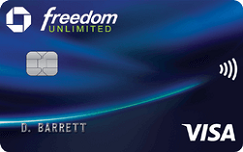It’s a common refrain from older generations: “These kids today all have credit cards! When I was young, we paid for everything with pennies and pocket lint.”
You’ll hear the same sentiment about cell phones, video games, and just about anything else invented or popularized within the last fifty years.
It’s true that a lot of kids today are using credit cards at an early age, but that might not be such a bad thing. Payment cards can be a powerful tool for early financial literacy. You just have to be smart about the kinds of cards you get for your kids, and you have to carefully monitor and guide their use.
What’s Ahead:
How can credit cards benefit kids?
When my husband and I were dating, I asked if I could look at his credit score. He told me to go ahead — he wasn’t sure what it was himself.
Turns out, it was a big fat zero.
He had never built a credit history for himself, preferring to pay off any purchases with cash or a debit card. No one had ever explained to him the importance of building a credit history through the responsible use of a credit card, so it took us over six months to build him a respectable score.
Thankfully, you can help your kids avoid this situation. If you add your child as an authorized user on your card, your responsible payment habits will help your child passively build their own credit file and get a leg up in their financial lives.
My parents added me as an authorized user when I was 16. By the time I graduated from college, my credit score was already in the 700s. I didn’t need them to cosign on my first real apartment and even though I’m only 29, the oldest account on my credit report is more than a decade old.
Some parents use that strategy when their kids are too young to even know what a credit card is. Real estate investor Jennifer Beadles said her three-year-old is already an authorized user on one of her credit cards.
“It makes buying a home and getting an apartment a lot easier,” said financial planner Kevin L. Matthews. “Imagine starting adulthood with an 800+ credit score.”
When can credit cards lead to trouble?
Things can always get a little hairy when financial agency and developing young minds cross paths.
Giving your kid a credit card can be like giving them a car. If it goes well, they learn about being a responsible adult. If it goes poorly, it could cost you thousands of dollars. They’ll still learn a valuable lesson, but a harsh one.
No matter who spends the money, the person named as the primary cardholder is responsible for the balance. If your kid buys a $300 Nintendo Switch on your credit card, you’ll be on the hook for it. If you can’t pay off their balance within that billing cycle, you’ll be responsible for any interest fees.
Some parents choose to minimize risk by adding their kid as an authorized user to their credit card account, without giving them the physical card or access to the card number.
But while this may prevent juvenile spending sprees, it also stunts financial growth.
Kids eventually need to learn how to budget their money, spend responsibly, and repay loans. The best way to teach kids about money while safeguarding your financial assets is to get them different types of payment cards as they age, and to intelligently supervise their usage of those cards.
How to make it work
1. Add your kid as an authorized user to your credit card
Adding a child as an authorized user on your own credit card will help them build up a strong credit history, provided you make your card payments on time. Use your best judgment to determine if your kid is old enough and mature enough to be given access to the actual card itself, or if it’s a better idea to just cut the card up when it arrives in the mail.
Your card issuer might allow you to set individual credit limits for each authorized user, which can keep a child’s spending in check while giving them some degree of financial autonomy. Just make it perfectly clear to your child what your expectations are, and the consequences they’ll face for stepping over the line.
Any amount your kid spends as an authorized user will earn cash back or rewards the same way your own card use does, which you can use for a family vacation or a graduation gift.
2. Supplement with a prepaid card or debit card
If you’re not comfortable giving your child access to a credit card, consider getting them a prepaid or debit card as an important step in their financial education. They’ll be able to see how their spending corresponds to their account balance decreasing, which is a prime opportunity to teach them about sticking to a monthly budget.
Some debit cards today can even help your kid build credit (see the Extra Debit Card featured below). Getting a credit-building debit card for your kid could obviate the need to keep them on your credit card account as an authorized user.
3. Graduate to secured cards and student cards
Once your child reaches legal adulthood, they should get in the habit of responsibly using their own credit-building products. The low credit limits typically associated with secured credit cards and student cards make them a great transitional financial product for independent young adults.
If your child signs up for their own secured card or unsecured student card, they’ll be building their credit independently and you can remove them as an authorized user on your own account.
Read more: Secured vs. unsecured credit cards
Best credit cards for kids
Best credit card for authorized users: Chase Freedom Unlimited®
Best secured credit card for kids: U.S. Bank Cash+ Secured Visa Card
Best student credit card: Capital One SavorOne Student Cash Rewards Card
Best debit card for kids: GoHenry
Best prepaid card for kids: Greenlight
Best credit-building debit card: Extra
Best credit card for authorized users: Chase Freedom Unlimited®
The Chase Freedom Unlimited® currently offers a sign-up bonus of an extra 1.5% on all purchases (up to $20,000 spent in the first year). That means during your first year, you’ll get:
- 6.5% back (normally 5%) on travel purchased through the Chase Travel Portal
- 4.5% back (normally 3%) on dining and at drugstores
- 3% back (normally 1.5%) on all other purchases
These excellent cash back/rewards rates are key to a good authorized user card. That’s because when your authorized user/child makes a purchase, you get the points as the primary cardholder. And it doesn’t charge an annual fee, so it’s a low-cost way to help your child build credit as an authorized user and to earn extra cash back or rewards for you and your family in the process.
The card is marketed as cash back, but it’s not really. It earns Chase Ultimate Rewards® points, which can be redeemed for cash at a rate of 1 cent each. But if you also have either the Chase Sapphire Preferred® Card, Chase Sapphire Reserve® Card, or Ink Business Preferred® Credit Card, you can convert the rewards you earn with the Chase Freedom Unlimited® to valuable airline and hotel points worth far more than 1 cent each.
Apply for the Chase Freedom Unlimited® now or read our complete card review for more info.
Best secured credit card for kids: U.S. Bank Cash+ Secured Visa Card
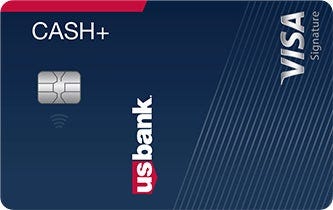 You have to be 18 to open a secured credit card. So if your kid is technically an adult but only just starting out their credit journey, the U.S. Bank Cash+ Secured Visa is a no-brainer decision.
You have to be 18 to open a secured credit card. So if your kid is technically an adult but only just starting out their credit journey, the U.S. Bank Cash+ Secured Visa is a no-brainer decision.
See, most secured credit cards don’t earn any rewards whatsoever. Their main (and often only) appeal is that you can qualify for them without a credit history or with a poor credit score. So any secured card that also offers a return on spending is the way to go.
The U.S. Bank Cash+ Secured will give you an incredible 5% cash back on two spending categories of your choice from the following list (on up to $2,000 in combined spending per quarter):
- Fast food
- Cell phone providers
- Department stores
- Electronics stores
- Movie theaters
- Select clothing stores
- Sporting goods stores
- Ground transportation
- Home utilities
- TV, internet, and streaming services
- Furniture stores
- Gyms and fitness centers
You can also choose either grocery stores, gas/EV charging stations, or restaurants as a regular 2% category. Everything else will earn 1% back.
This card requires a deposit of at least $300 to open — and you’re capped at a deposit of $5,000, which means your credit line can’t exceed $5,000, either. There’s no annual fee, and cardholders can eventually ‘graduate’ to an unsecured credit card, at which point the security deposit will be returned.
Best student credit card: Capital One SavorOne Student Cash Rewards Card
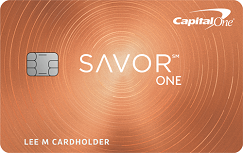 With the Capital One SavorOne Student Cash Rewards Credit Card you’ll get:
With the Capital One SavorOne Student Cash Rewards Credit Card you’ll get:
- 3% cash back on dining, groceries, entertainment, and eligible streaming memberships
- 1% cash back on everything else
Does that not sound like the perfect collection of bonus categories for a college student? And 3% back is abnormally high, especially with uncapped spending.
Since the Capital One SavorOne Student Cash Rewards Credit Card is usually issued as a Mastercard World card, it can also come with above-average insurance for a student card, including:
- Rental car insurance
- Travel accident insurance
- Roadside dispatch services
- Price protection
- Extended warranty protection
The Capital One SavorOne Student Cash Rewards Card currently comes with a $50 bonus when you spend $100 on purchases within 3 months from account opening.
Again, you’ll need to be at least 18 to get this card, which won’t be a problem for most college students.
Learn more about the Capital One SavorOne Student Cash Rewards Credit Card.
Best debit card for kids: GoHenry
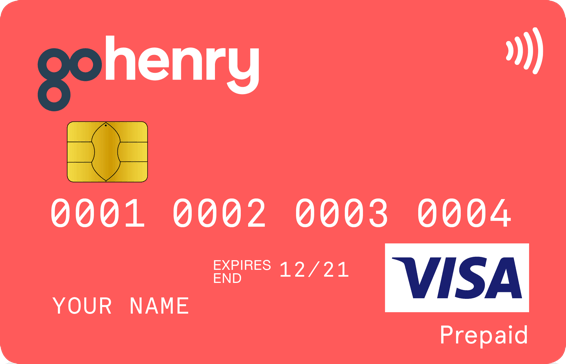 GoHenry excels in the educational aspect of payment cards. Within its mobile app, you can set up “Money Missions,” which teach kids about critical financial topics like how to budget. Kids ages six to 18 can hold a GoHenry Card, and you can tailor its financial lessons based on age.
GoHenry excels in the educational aspect of payment cards. Within its mobile app, you can set up “Money Missions,” which teach kids about critical financial topics like how to budget. Kids ages six to 18 can hold a GoHenry Card, and you can tailor its financial lessons based on age.
GoHenry is very interactive for parents, as well. You can set savings goals and spending limits, and you can turn each card on and off at will. You can assign chores and tasks to your kids, and they get paid once they are complete.
Just note that you’ll be subject to a $3.99 monthly fee per child. But you’ll have 30 days to try the program out for free, so if you don’t like it you can cancel with no harm done.
Best prepaid card for kids: Greenlight
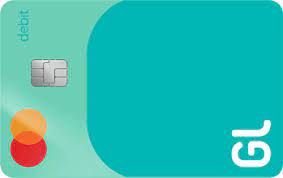 Greenlight is one of the best financial products on the market for kids of all ages.
Greenlight is one of the best financial products on the market for kids of all ages.
Here’s how it works: Parents can load money onto the Greenlight card (effectively “paying” their kids) for chores, jobs, good behavior, etc. Parents can then set up the card to only work at specific stores — keeping their kids from buying things they shouldn’t. You’ll receive notifications whenever your child spends money, and even when the card is declined. If the card is out of money, or if your child is requesting an exception to one of the non-approved stores, you can grant them access instantly if you choose.
One of my favorite Greenlight features is “Parent Paid Interest.” To show the value of compound growth, parents can pay interest on their kid’s balance — incentivizing them to save.
And another minor perk of Greenlight (but a cool one nonetheless) is that you can order your child’s prepaid card with their picture on it. This can help prevent unauthorized people from using the card — whether it’s stolen or merely picked up by one of your other children.
The Greenlight card costs $4.99 per month for up to five children — but you can try it out for one month without paying anything. If you don’t like it, just cancel before your first payment.
Best credit-building debit card: Extra
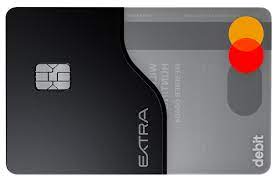 The Extra Debit Card is enticing for two huge reasons, both of which are hyper rare in the debit card space:
The Extra Debit Card is enticing for two huge reasons, both of which are hyper rare in the debit card space:
- It earns rewards on purchases (up to 1% back).
- It helps you build credit.
Because it’s not a credit card, there is no credit check required — so you can open it even if you have zero credit history. Simply link it to your bank account, make purchases, and your credit will begin to build.
Extra uses your bank account balance to provide you with a temporary “credit line.” However much you’ve got in your account is how much you can spend with Extra. When you swipe the card, Extra will extend you the credit necessary to make the purchase. It lets you borrow the money from them for a day. The next day, it withdraws the money out of your bank account and pays the card off.
Basically, it’s genius.
But there is a catch: The Extra Debit Card costs $25 per month (or $149 if you pay annually) — though there is a version that doesn’t earn rewards (and still builds credit), which costs just $20 per month (or $199 if you pay annually). In other words, if you’re not earning at least $5 per month in rewards, you’re better off going with the cheaper version.
To open the Extra Debit Card, you’ll need to be at least 18 years old.
FAQs about credit cards for kids
How old do you have to be to get a credit card?
To open a credit card in your own name in the US, you must be at least 18 years old — a legal adult. That goes for both secured and unsecured credit cards.
That said, some may find opening a credit card frustratingly difficult before age 21 — particularly one that’s not secured. That’s in part because of the Credit Card Accountability Responsibility and Disclosure Act of 2009, which effectively prohibits anyone under 21 from opening a card unless they’ve got ample proof of steady income that they can use to pay their bills.
What is a good credit limit on a first credit card?
A good credit limit on your first credit card is around $1,000.
That might not sound like a lot, but it should be more than enough for most teenagers. My first credit card offered me an initial $500 limit — which was plenty for the way I was using it back then. And with some good repayment habits, my limit increased to $1,500 within two years.
At what age can you start building credit?
You can start building your credit as soon as you’re born. A child can begin their credit journey if their Social Security number is added to an already existing credit account — usually that of the parent. The most common method is adding a child as an authorized user on a credit card.
Read more: How to get a free credit report and credit score
What is an authorized user on a credit card?
If you apply for and open a credit card, you are the “primary” cardholder. Authorized users are “secondary” cardholders.
As the primary cardholder, you can add authorized users to your card, which gives them the ability to use your credit line. Parents often add their children as authorized users for a variety of reasons, which we’ll touch on in a second.
Each credit card issuer enforces a specific age limit for authorized users:
- American Express —13 years old
- Bank of America — No minimum age
- Capital One — No minimum age
- Chase — No minimum age
- Citi — No minimum age
- Discover — 15 years old
- U.S. Bank — 16 years old
- Wells Fargo — No minimum age
In most cases (with Citi as the exception), you’ll have to submit the Social Security number of the authorized user as well as their name and date of birth.
Do authorized users build credit?
Authorized users will build credit. However, the credit history they acquire as an authorized user mirrors the credit of the primary cardholder. If the primary cardholder is late in paying their credit card, the authorized user’s credit history will be marred.
It’s only a good idea to add an authorized user if the primary cardholder has good credit habits.
Read more: Can being an authorized user help you build credit?
Can adding an authorized user hurt my credit?
Adding your child as an authorized user to your credit card means that they can use your credit line — and essentially spend your money — when their card arrives in the mail. If you’re not careful, you may find quite a tab that you weren’t expecting. If you can’t pay it off, you’ll incur interest. And depending on the size of the balance, your credit score may even drop.
However, there’s no harm in adding your kid as an authorized user and then cutting their card into pieces when it arrives. After all, they don’t have to use the card to build credit.
Read more: Authorized cardholders — the cros and cons
How safe are credit cards for kids?
Relative to other payment methods, credit cards are actually one of the better options for kids. Unlike debit cards and cash, there’s no real harm done if your child loses their credit card. You can simply cancel their authorized user card and order another.
The obvious downside to a credit card is that it’s slightly more difficult for kids to understand the principles of budgeting when they can’t witness a cash wad, or even a bank account balance, as it depletes.
FAQs about debit cards for kids
What are the advantages of debit cards for kids?
The main advantage of kids using a debit card is that a debit card can teach fundamental financial lessons. If a kid draws from their own bank account, they can see the money drain from their precious balance — and they aren’t able to spend more than they’ve saved.
How old do you have to be for a debit card?
Most banks enforce some sort of age limit for debit cards, often around age 13. However, you can find kid-focused cards that have age minimums as low as six years old.
Obviously, the child will still need an adult parent or guardian to oversee the account.
Do debit cards build credit?
Most debit cards don’t help their users build credit. Traditional debit cards simply take the money out of your bank account to pay for your purchases — there’s no credit involved.
However, a new breed of debit cards is clawing its way into popularity. These cards work similarly to secured credit cards. Here’s what they do:
- They give you a credit line equal to your bank account.
- When you swipe your debit card, the card gives you a single-use credit line for that purchase.
- The next day, the card will pay itself by withdrawing money from your bank account.
- In this way, you’re technically using credit, but spending your money as you would with a debit card.
How safe are debit cards for kids?
Debit cards are intrinsically less safe than a credit card. If you lose your debit card, you’ve got to report it immediately or you could end up losing a serious amount of money. If you report a missing debit card even three business days after it’s been lost or stolen, you’re on the hook for up to $500 per federal law.
Now, debit cards are still more secure than cash. But, then again, your kids probably aren’t walking around with several hundred dollars in cash.
FAQs about prepaid cards for kids
What are the advantages of prepaid cards for kids?
Using a prepaid card is an excellent way to help your child budget. Expenditures are limited to the amount of money you load onto the card, and kids have to make that last until you decide to load more money for them.
How old do you have to be for a prepaid card?
Many prepaid card services stipulate a minimum age, but there are some that don’t. With companies like Greenlight you can set up a prepaid card for kids of any age.
However, the age limits on kid-focused cards, often around six years old, shouldn’t be too prohibitive. Not many kids below that age will care about or understand the value of money, anyway.
Do prepaid cards build credit?
We’re unaware of any prepaid card currently on the market that builds credit. The closest approximations to credit-building prepaid cards are secured credit cards, which provide a credit line matching a chunk of money you deposit as collateral, or the aforementioned credit-building debit cards.
How safe are prepaid cards for kids?
Prepaid cards are slightly more safe than debit cards for one reason: They’re not linked to a bank account. They only have as much money as you load onto it. So if you want to give your kid $100 per month, that’s all you’ve got to lose if the card is stolen.
Summary
The perfect payment card for your kiddo depends entirely on their age and the stage of life they’re entering. But whether they’re a kindergartener or a college student, there are always steps that you as a parent can take to help your kids along in their financial journey.
We suggest the following strategies for different ages:
Ages 0–12
When they’re too young to fully understand the value of money, you can nonetheless add a kid as an authorized user on your credit card and cut it up when it arrives. They will instantly begin gaining good credit from your positive financial habits.
Ages 13–17
When they start getting a token allowance and doing chores, you can open a prepaid card or debit card for them and show them the value of work and savings.
Age 18+
Once they’ve reached legal adulthood you can encourage them to open a secured credit card or student credit card with a manageable credit limit. After a few years of responsible use they’ll likely be able to progress to a bonafide, unsecured credit card.
By gradually incorporating different types of payment cards into your child’s life, they’ll already have a robust credit score and good financial habits when they’re old enough to be truly financially independent. They’ll even be able to get auto loans and other credit lines without you having to cosign!
For Capital One products listed on this page, some of the above benefits are provided by Visa® or Mastercard® and may vary by product. See the respective Guide to Benefits for details, as terms and exclusions apply.


